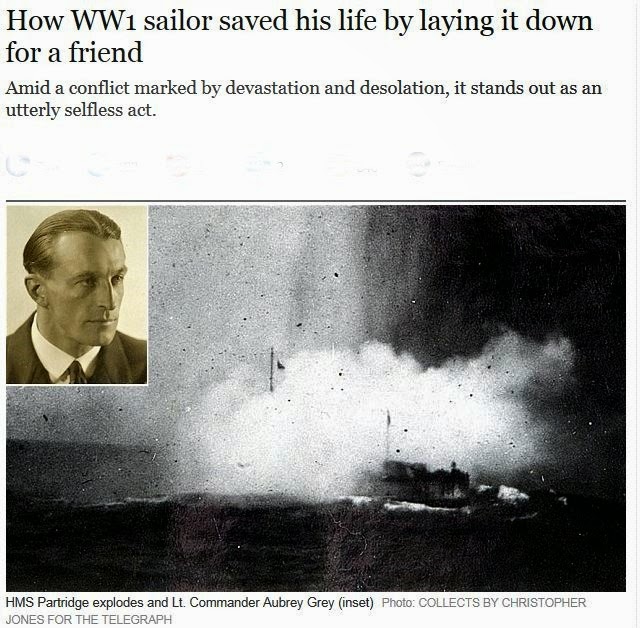Let's go back to first principles and remind ourselves of what the dictionary tells us. Bear this definition in mind as I tell you a true tale.
HERO: A person distinguished by courage and admired for brave deeds. A person who has noble qualities and has performed selfless acts. Regarded as a model or an ideal for others due to heroic action.
Regular readers will be aware that I'm commemorating those named on our local WW1 memorial on the centenary of their deaths. One such will be Lancelot Walters who was killed when his ship, HMS Partridge, was sunk on December 12th 1917. As well as his name appearing on our two war memorials, he is also commemorated on a separate, and easily missed, plaque, just to the right of the altar in the church. The wording on the plaque is rather intriguing and reads: ‘.......who lost his life in action on Dec 12th 1917 in the North Sea in spite of a gallant attempt to save him by Sub Lieut Aubrey Egerton Grey R.N.’ What was the story behind these few words? Who was Aubrey Grey and what did he do to merit such praise?
After enough research to make me feel rather pleased with myself, I managed to piece together the following. In late 1917 HMS Partridge was one of a number of ships, based at Lerwick in the Shetland Islands, being used to escort convoys to and from Norway. On 11th December 1917 the destroyer left port in the company of the destroyer HMS Pellew and four armed trawlers, escorting a convoy of six merchant ships. At 11.45 am on 12th December the convoy was south west of Bjorne Fjord when enemy ships were sighted to the north. The convoy was ordered to scatter and the Partridge and the Pellew prepared to engage the enemy in the form of four destroyers. The Partridge was quickly hit, and with her main steam-pipe severed, was rendered helpless and a sitting target. After being struck by another torpedo her Captain gave orders for her to be abandoned. Despite this order, Lieutenants Grey and Walters were determined to continue the fight. Manning a torpedo tube they fired one which hit an enemy destroyer but failed to explode. Soon afterwards Grey was wounded in the thigh. The two Lieutenants then made for a boat but this capsized casting both into the water. Grey, although wounded, then performed an unselfish act of bravery. He swam to help Walters who was exhausted, and although badly wounded himself in the leg, swam with him for more than a quarter of a mile and placed him on the only vacant place on a raft. Seeing that his own added weight would endanger the raft, he then swam away and was eventually picked up by a German destroyer in a very exhausted state. Remember that this was December in the North Sea: there was a heavy sea running at the time and the weather was intensely cold. For this gallant act of life saving, Lieutenant Grey was awarded the Royal Humane Society’s Silver Medal and was subsequently awarded the Society’s Stanhope Gold Medal in 1919 for his action.
 |
| HMS Partridge in a pre-WW1 photograph |
 |
| A photograph, from an enemy ship, of HMS Partridge taken shortly after she was hit. |
 |
| A press clipping of the award of the RHS's medal. |
 |
| The younger Aubrey Grey at the plaque commemorating his father's bravery. |


No comments:
Post a Comment